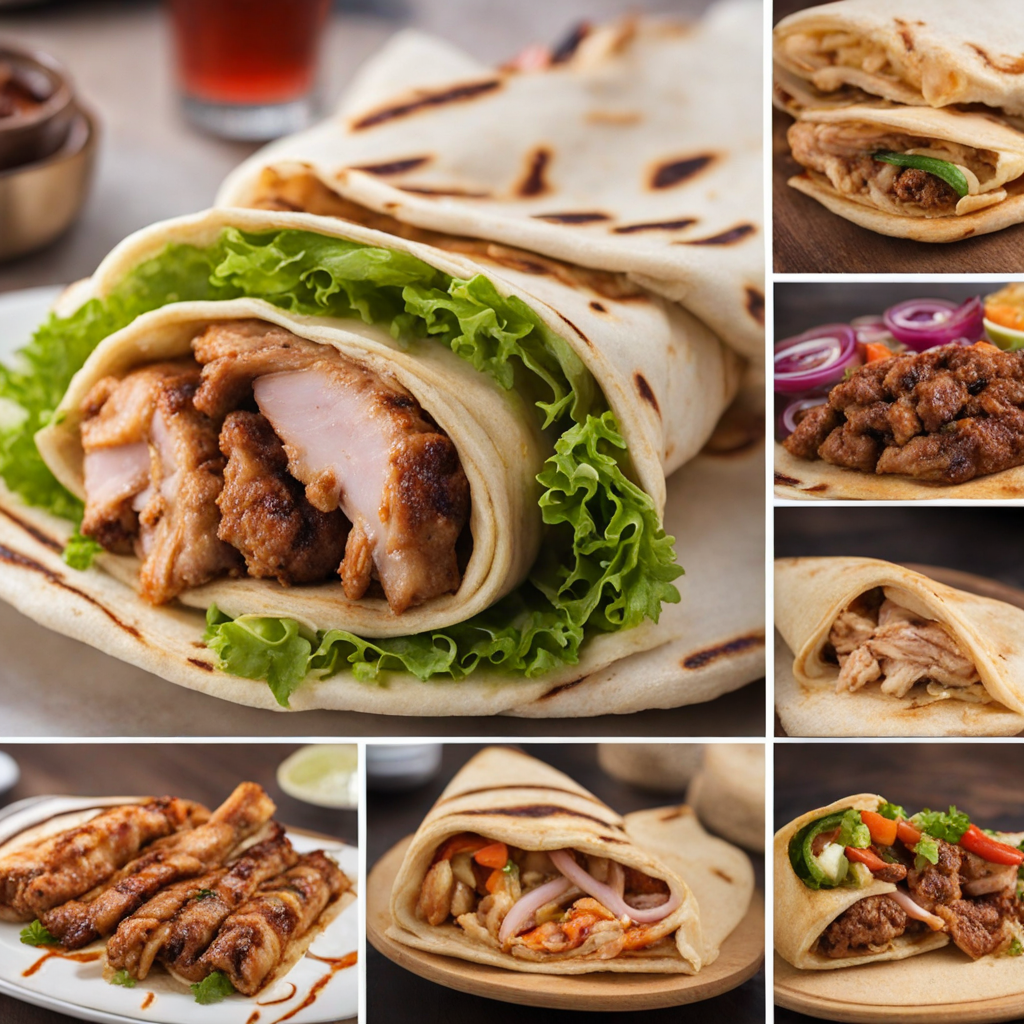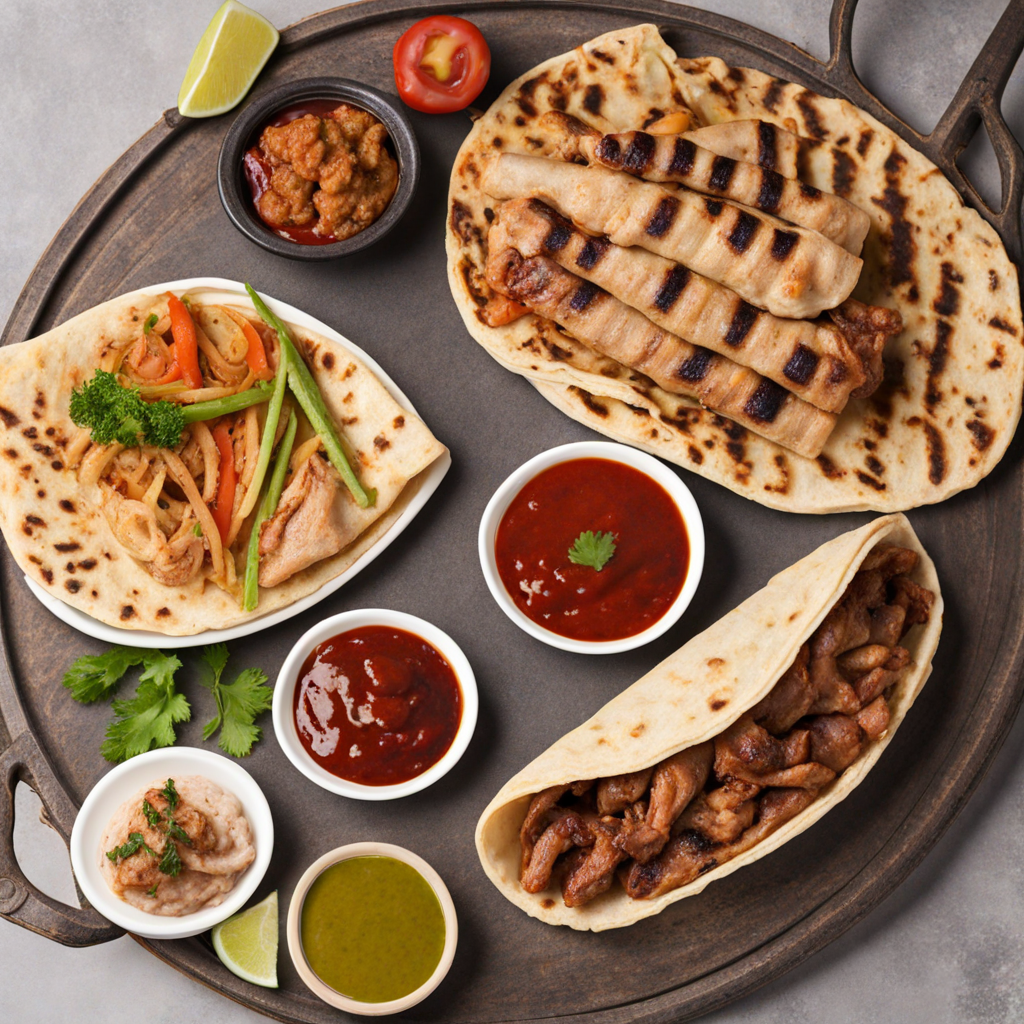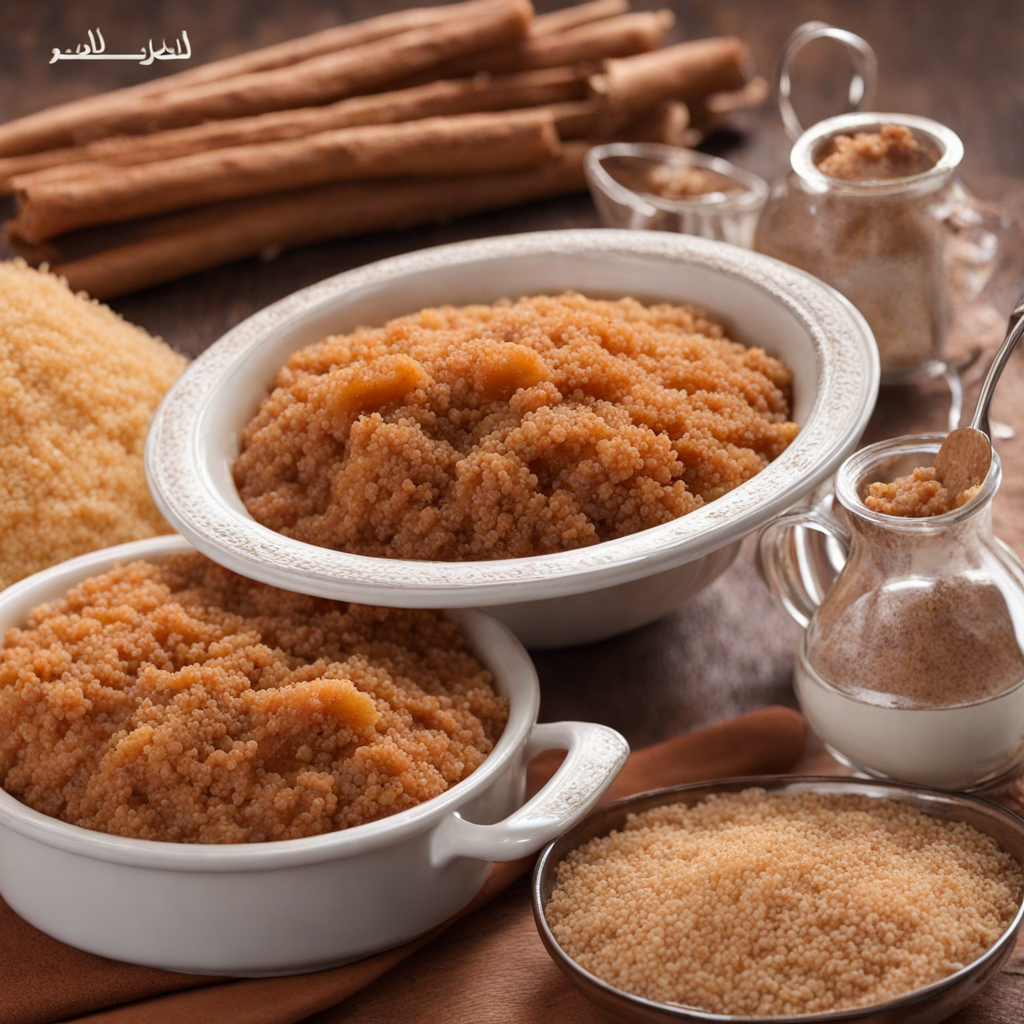Shawarma
Shawarma is a tantalizing Middle Eastern dish that has captured the hearts and taste buds of food lovers around the world, particularly in Saudi Arabia. This popular street food features marinated meat, typically lamb, chicken, or beef, that is slow-cooked on a vertical rotisserie. As the meat cooks, it becomes succulently tender and infused with a harmonious blend of spices, including garlic, cumin, and paprika. The outer layers are shaved off in thin slices, ensuring that each bite is juicy and packed with flavor, while the inner meat continues to cook, maintaining its moisture and richness. Once the meat is sliced, it is often served wrapped in a warm, soft pita bread or flatbread, accompanied by an array of fresh toppings. Common garnishes include crisp lettuce, ripe tomatoes, refreshing cucumbers, and pickled vegetables, which add a delightful crunch and balance to the savory meat. To elevate the experience further, shawarma is typically drizzled with a variety of sauces, such as tahini, garlic sauce, or spicy chili sauce, creating a perfect harmony of flavors and textures in each bite. In Saudi Arabia, shawarma is more than just a meal; it's a cultural staple enjoyed by locals and visitors alike. It can be found at street carts, restaurants, and food stalls, each offering their unique twist on this beloved dish. Whether enjoyed as a quick snack or a satisfying meal, shawarma provides an exciting culinary journey that showcases the rich flavors and traditions of Saudi Arabian cuisine, making it a must-try for anyone looking to explore new and delicious tastes.
How It Became This Dish
The History of Shawarma: A Culinary Journey Through Time Shawarma, a beloved dish known for its tantalizing flavors and aromatic spices, has carved a significant place in the culinary landscape of the Middle East, particularly in Saudi Arabia. This savory street food, made from marinated meat cooked on a rotating vertical spit, has transcended its humble origins to become a global phenomenon. The history of shawarma is a tale woven through time, culture, and geography, reflecting the rich tapestry of the region's culinary heritage. Origins of Shawarma The roots of shawarma can be traced back to the Ottoman Empire, particularly in the 19th century. The dish is believed to have evolved from the Turkish döner kebab, which features meat cooked on a vertical spit. The term "shawarma" is derived from the Arabic word "شاورما," which itself comes from the Turkish word "çevirme," meaning "to turn." This reflects the cooking method, where the meat is turned slowly on a vertical rotisserie, allowing it to cook evenly and develop a crispy exterior. While the exact origins are somewhat murky, it is widely accepted that shawarma was first introduced to the Levant region, which includes modern-day Lebanon, Syria, and Palestine. As trade routes flourished and cultures mingled, the dish gradually made its way to the Arabian Peninsula, where it was embraced and adapted into the local cuisine. Cultural Significance In Saudi Arabia, shawarma has become more than just a meal; it represents a cultural connection to both tradition and modernity. The dish is often enjoyed as a street food, making it accessible to all layers of society. Vendors can be found in bustling markets and on busy streets, serving up freshly made shawarma to eager customers eager for a quick yet satisfying meal. Shawarma’s popularity can be attributed to its versatility. It can be made with various meats, including chicken, beef, lamb, or even veal, marinated in a blend of spices such as cumin, coriander, garlic, and paprika. The marinated meat is then slow-cooked on the spit, resulting in tender slices that are often served wrapped in pita bread or flatbread, accompanied by fresh vegetables, pickles, and a drizzle of tahini or garlic sauce. In Saudi culture, shawarma holds a special place during social gatherings, celebrations, and late-night outings. It is commonly enjoyed at family gatherings, community events, and even during the holy month of Ramadan, where it serves as a popular iftar dish to break the fast. This communal aspect of sharing food enhances its significance, reflecting the Arab tradition of hospitality and togetherness. Development Over Time As shawarma gained traction in Saudi Arabia, it evolved to incorporate local flavors and ingredients, leading to a distinct Saudi version of the dish. While the core preparation method remains the same, regional variations have emerged, showcasing the diverse culinary influences present in the Kingdom. In the 20th century, shawarma began to gain wider recognition beyond street vendors. Restaurants specializing in Middle Eastern cuisine began to include shawarma on their menus, and it became a staple dish in many households. The post-oil boom era in Saudi Arabia saw an influx of international influences, which further popularized shawarma. The dish was embraced not only by locals but also by expatriate communities, contributing to its status as a beloved fast food option. In recent decades, the globalization of food culture has propelled shawarma onto the international stage. As Saudi Arabia became more connected to the world, shawarma spread to various countries, adapting to different tastes and preferences. In places like the United States and Europe, shawarma has been embraced by food enthusiasts and has inspired fusion cuisine, leading to the creation of shawarma bowls, wraps, and even pizza toppings. Shawarma Today Today, shawarma is celebrated not just in Saudi Arabia but around the world. It has become synonymous with Middle Eastern cuisine and is often featured in food festivals and culinary events. The dish’s appeal lies in its combination of flavors, textures, and the interactive dining experience it offers. Many restaurants now allow customers to customize their shawarma, choosing from a variety of sauces, toppings, and sides, making it a personal culinary experience. Moreover, shawarma has adapted to the growing trend of health-conscious eating. Many vendors and restaurants now offer grilled options, whole grain wraps, and a plethora of fresh vegetable toppings to cater to the evolving preferences of consumers. This adaptability speaks to the dish's resilience and its ability to remain relevant in a rapidly changing food landscape. Conclusion The history of shawarma is a testament to the power of food to transcend borders and cultures. From its Ottoman roots to its status as a staple in Saudi Arabian cuisine, shawarma embodies the essence of culinary evolution. It serves as a delicious reminder of the rich cultural heritage of the Middle East, a symbol of communal dining, and an ever-evolving dish that continues to capture the hearts and palates of people around the world. As shawarma continues to gain popularity in new regions and among diverse populations, it remains a beloved comfort food that brings people together. Whether enjoyed at a street vendor in Riyadh or a gourmet restaurant in New York City, shawarma is more than just a meal; it is a culinary journey that reflects the history, culture, and spirit of the people who cherish it.
You may like
Discover local flavors from Saudi Arabia







